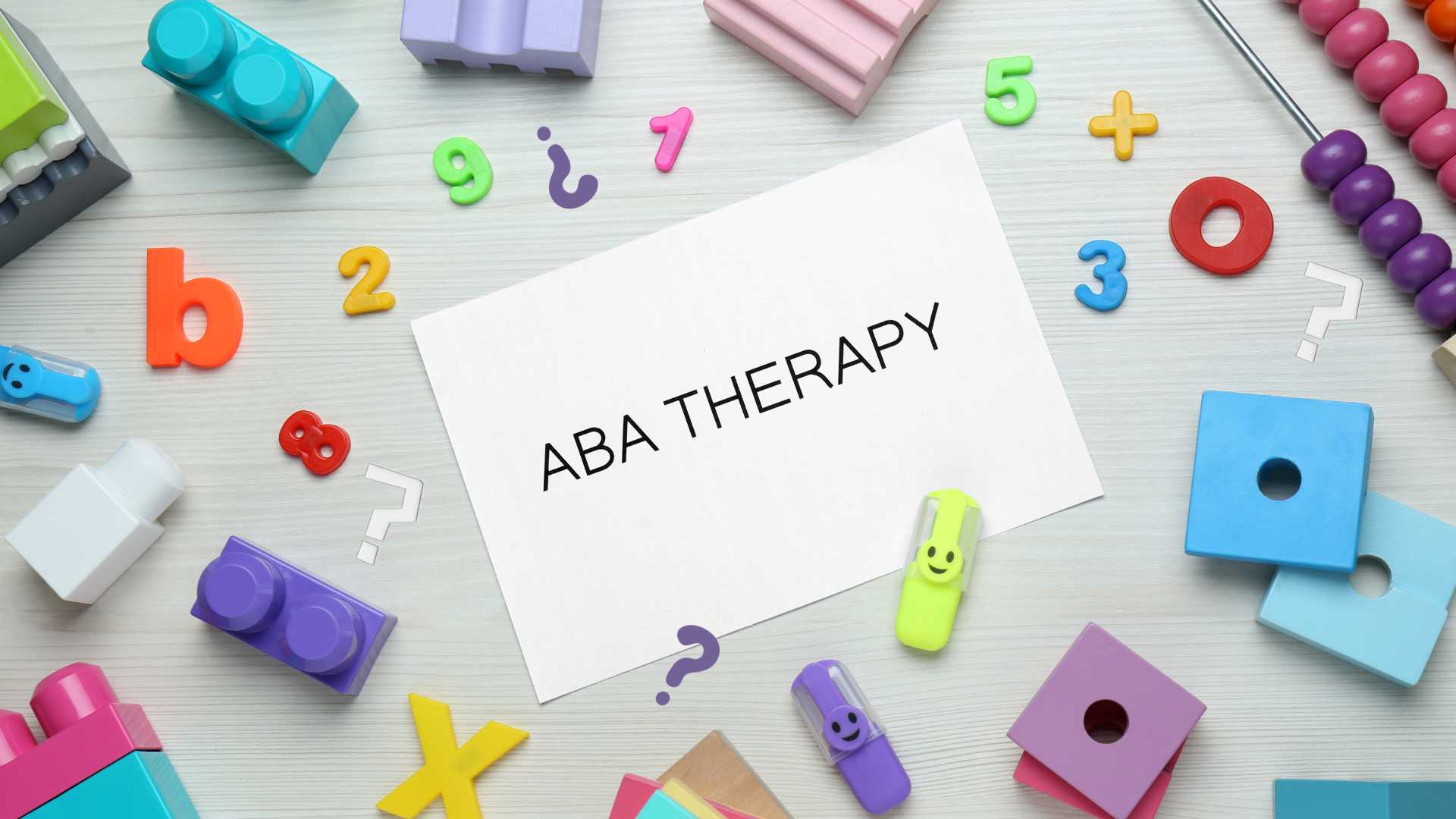What is ABA Therapy?
Receiving a diagnosis of Autism Spectrum Disorder (ASD) for a loved one is life-changing news. However, it marks the initial step in seeking your child’s best care. If you’ve embarked on this journey of hope and transformation, you’ve likely discovered Applied Behavior Analysis (ABA). But what is ABA therapy? How can it positively impact your child’s life? Rest assured, we’ll address your lingering ABA questions here.
This comprehensive blog by Texas ABA Centers aims to provide a roadmap for understanding ABA therapy, breaking down its principles, benefits, and common ABA questions.
1. Is ABA Therapy Effective?
The effectiveness of ABA therapy in treating autism is an occasionally debated topic, with some critics claiming it is too rigid and behaviorally focused. However, most experts consider it the gold standard for treating autism. Despite the debate, there is plenty of evidence to support the efficacy of ABA therapy in helping individuals with ASD to develop essential life skills such as communication, social interaction, and adaptive behavior.
Through careful observation and data analysis, a Board Certified Behavior Analyst (BCBA) can identify problem behaviors and develop individualized treatment plans to reinforce positive behaviors and reduce negative ones. With consistent and patient implementation, ABA therapy can help individuals with autism better navigate the world around them and lead more fulfilling lives.
Research in Autism Spectrum Disorders suggests that ABA programs exhibit moderate to high effectiveness. Notably, ABA therapy is highly effective in enhancing intellectual abilities, moderately to very effective in improving expressive and receptive language skills, and somewhat effective in raising IQ scores derived from non-verbal tests. Moreover, they contribute positively to adaptive behavior, socialization, and sensory language skills.
2. Does ABA Therapy Cure Autism?
It’s important to dispel the myth that there’s a singular “cure for autism.” Autism is a complex neurodevelopmental condition, and applied behavior analysis therapy can not eliminate autism but rather assist individuals in developing essential skills and navigating their unique challenges.
ABA therapy focuses on improving specific behaviors, communication, and social interactions, contributing to enhanced overall functioning. It’s crucial to approach autism with an understanding that it’s a lifelong aspect of an individual’s identity, and interventions like ABA therapy provide support rather than eradicate the condition.
3. Is ABA Therapy Considered a Type of Healthcare?
ABA therapy is a form of healthcare because it involves systematic, evidence-based interventions aimed at improving various aspects of an individual’s behavior, particularly those associated with developmental disorders like ASD.
The personalized nature of ABA therapy, tailored to meet everyone’s needs, aligns with healthcare principles focused on addressing the unique challenges and promoting the overall well-being of the person receiving treatment.
4. Does ABA Therapy Incorporate Occupational and Speech Therapy as Well?
While ABA therapy primarily focuses on behavior analysis and modification, it typically does not encompass occupational or speech therapy within its scope. However, these therapeutic disciplines may be integrated into an individual’s overall treatment plan if considered beneficial.
Occupational therapy addresses skills related to daily living activities, fine motor coordination, and sensory processing to enhance an individual’s functional independence. Speech therapy, on the other hand, focuses on improving communication skills, including speech and language development.
5. Is Applied Behavior Analysis an Academic Discipline?
Answering one of the more challenging ABA questions involves clarifying its relationship with learning. It’s crucial to emphasize that ABA therapy doesn’t substitute academics or formal schooling. While it fosters positive behaviors conducive to learning, its primary aim isn’t to replace the educational system.
Instead, ABA therapy can effectively prepare a child with autism for school, helping them acquire the necessary skills for independence. Through ABA, a child might organically learn skills that facilitate seamless integration into a classroom setting. Preparing for school readiness encompasses various aspects, including joint attention, hygiene, self-care, self-awareness, and communication skills. Additionally, it addresses responsiveness, imitation, following directions, and eating habits.
6. Do Parents Participate in ABA Therapy?
Absolutely. Parents are often encouraged to participate actively in ABA therapy. It goes beyond just attending sessions; involvement includes understanding ABA principles and techniques through training so parents can consistently apply them at home.
7. Can ABA Therapy Reduce Specific Behaviors?
ABA therapy is effective in reducing specific behaviors. It breaks down complex behaviors into manageable components and focuses on strengthening desired behaviors while diminishing challenging ones through positive reinforcement.
According to the National Library of Medicine, ABA therapy can effectively reduce the frequency of certain repetitive behaviors and address problematic behaviors linked to repetition in autism, including aggression and noncompliance.
Texas ABA Centers has a team of highly skilled BCBAs who create customized therapy plans, and our Registered Behavior Technicians (RBTs) implement these plans during therapy sessions. Individualized plans ensure that therapy is practical and tailored to meet everyone’s needs.
8. Is ABA Therapy Covered by Insurance?
The coverage of ABA therapy by insurance can vary depending on the state and specific insurance plan. For instance, in Texas, there is a mandate known as the Texas Autism Insurance Mandate, which requires insurance providers to cover ABA therapy for children with autism up to a defined limit based on age and diagnosis.
We invite you to read our Guide to ABA Insurance Coverage in Texas to learn how to get insurance coverage for your loved one’s ABA therapy.
9. What is Positive Reinforment in ABA Therapy?
Positive reinforcement is a fundamental concept that involves rewarding a desired behavior immediately after it occurs. The main goal is to increase the likelihood that the person will repeat the behavior in the future.
When an individual engages in a specific behavior and receives positive compensation, they form a connection between the behavior and the desirable outcome. This reinforcement encourages them to continue exhibiting the desired behavior in anticipation of the positive reinforcement.
Positive reinforcement can take various forms based on the person’s preferences and needs. It could include verbal praise, tangible rewards, access to preferred activities, or other reinforcing stimuli. The key is to identify what motivates and reinforces the person, as this can differ from one person to another.
10. Is Applied Behavior Analysis Exclusive to Individuals with Autism?
For our last ABA question, we can clarify that ABA is a scientific and systematic approach that understands and helps modify behavior and can address a wide range of individuals across diverse conditions.
ABA techniques and principles have successfully improved behavior in various areas, such as education, organizational behavior management, developmental disabilities, and mental health. In addition, ABA is not limited to any specific age group and can work with children, adolescents, and adults.
Texas ABA Centers and ABA Questions
If you’re in Austin, Dallas, or Houston and are considering starting ABA therapy for your loved one, we encourage you to take the next step with Texas ABA Centers.
We provide valuable and personalized ABA therapy, offering empowering support to individuals and parents on their unique journeys. You can make an immeasurable difference in the life of your loved one on the spectrum. Contact us today at (844) 423-9483 and continue exploring our inspiring content.








